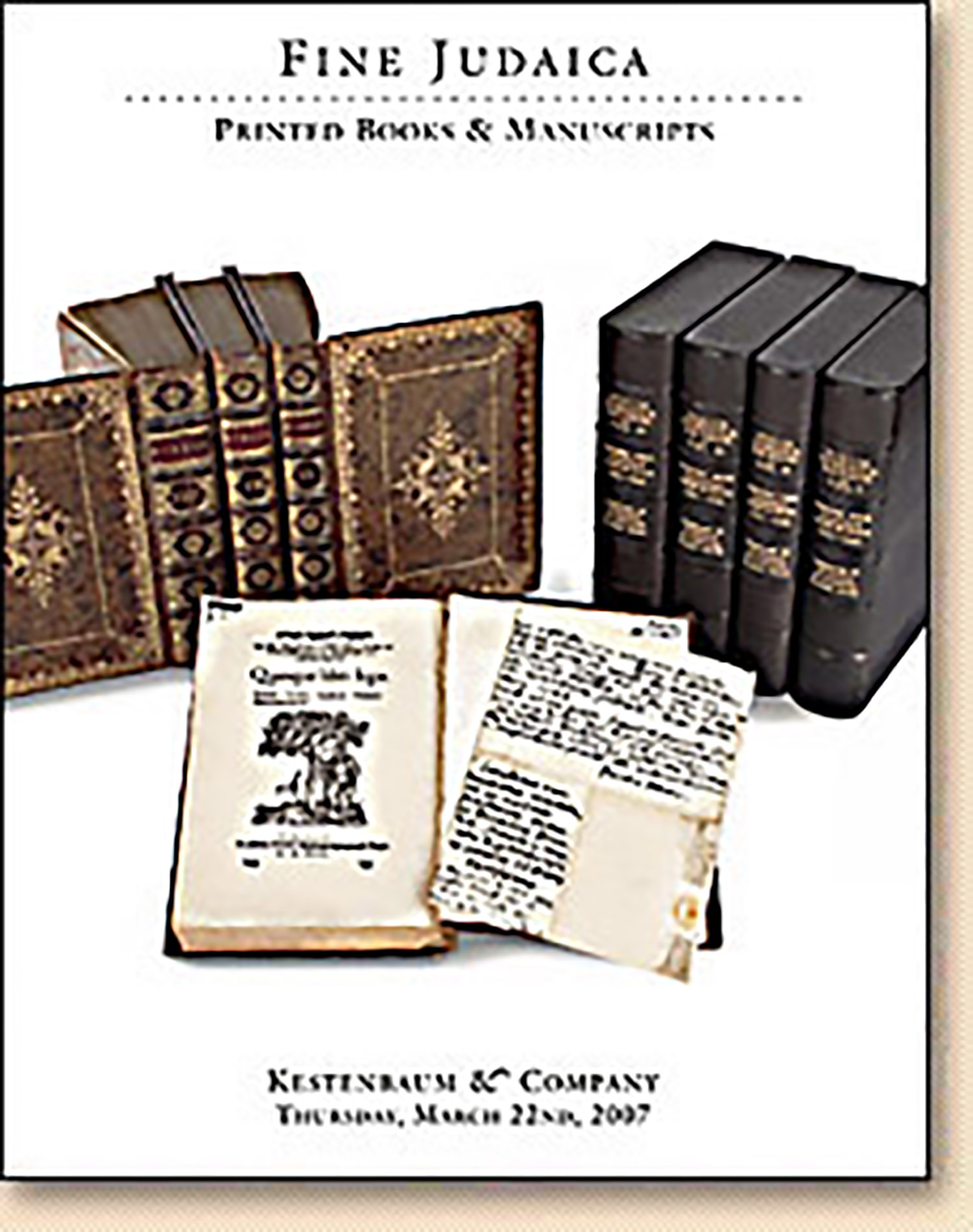(RASHI

AUCTION 36 |
Thursday, March 22nd,
2007 at 1:00
Fine Judaica: Printed Books & Manuscripts
Lot 168
(RASHI
Constantinople: (circa 1520-25)
Est: $30,000 - $40,000
PRICE REALIZED $78,000
EXTREMELY RARE CONSTANTINOPLE COLLECTION OF SUPER-COMMENTARIES TO RASHI
David Frankel, of Husyatin-New York regarded the acquisition of this work as one of the pinnacles of his book-selling career, remarking that a complete copy of the “Canizal”, as this work is known in the scholarly world, is as scarce as one of the rarest incunabula.
Yudlov in his article in Alei Sepher describes three differing title pages of this book. The present copy contains the rare abbreviated version: “Peirushim le-Rashi ZaTZa”L”. According to Yudlov, only two other copies with this title are known: in the Library of the Ez Hayyim, Amsterdam and the Jewish Theological Seminary, New York.
On f.47r. the editor writes: “Since R. Jacob Canizal did not comment on Parshath Mas’ei, I have substituted for him the comment of R. Abraham ben Eliezer, of blessed memory.” One would therefore presume this was the author of works of an apocalyptic nature, R. Abraham ben Eliezer Halevi (also called the Elder). However Scholem gives as the date of his death as 1528. Assuming this is correct, our author must be another R. Abraham ben Eliezer. Nevertheless, there is the possibility that the Sepher Canizel was not printed by 1525 as some bibliographers assume (e.g. Vinograd), but later, in 1530, as suggested by Yudlov in Ginzei Yisrael. In fact, if the identification is positive, this would indeed prove the later date of publication. See G. Scholem, Kiryath Sepher, Vol. I (1924/25), 163-4; Vol. II (1925-6), pp. 101-141, 269-273; Vol. VII (1930-1), pp.440-456; EJ, Vol. II, cols. 140-141.
There exist several variants of the Sepher Canizel. See Y. Rivkind, Alexander Marx Jubilee Volume (Hebrew) (1950), pp. 409-410. The pagination of this volume is similar to Variant One (JTSAL) described by Rivkind. The first 18 leaves have pagination at the bottom of the page, with the exception of folios 13 and 15-18; starting with folio 19 the numbers move to the top of the page.
These super-commentaries found in this work are known for their comprehensiveness and wide-ranging discussions of many fine points of Rashi’s commentary
